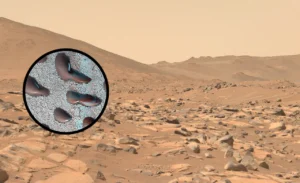Frozen Martian Dunes May Offer Clues to Past Climate and Potential for Life

Frozen sand dunes observed on Mars’ surface could provide valuable insights into the planet’s past climate and the possibility of life. A layer of carbon dioxide frost covering these dunes halts their movement, allowing scientists to study how seasonal changes shape Mars’ terrain. Researchers are investigating whether Mars once supported liquid water for extended periods—an essential factor in determining the planet’s potential for microbial life. These frozen formations remain stationary until spring, when rising temperatures cause the frost to sublimate, freeing the dunes.
Carbon Dioxide Frost Stops Dune Migration
According to a Live Science report, NASA’s Mars Reconnaissance Orbiter captured images of frozen sand dunes in Mars’ northern hemisphere in 2022. Unlike Earth’s deserts, where dunes shift due to wind, Martian dunes remain locked in place under a winter frost layer of carbon dioxide, which prevents sand grains from moving. The dunes remain immobile until the frost sublimates with spring’s warmth, allowing normal movement to resume.
Signs of Past Water on Mars
Studying these frost-covered dunes may help scientists determine whether liquid water once existed on Mars for extended periods. Although the frost itself consists of carbon dioxide rather than water, its presence is linked to Mars’ climatic history. The planet experiences extreme variations in axial tilt, much greater than Earth’s, leading to significant climate shifts over millions of years. During periods of higher tilt, Mars may have developed a thicker atmosphere, potentially allowing liquid water to exist on its surface.
Unraveling Mars’ Climate History
Understanding carbon dioxide frost cycles can help researchers trace Mars’ environmental evolution. Observations of these frost patterns and formations may provide clues about prolonged periods of stable liquid water, strengthening theories about Mars’ past habitability. If such conditions existed, the likelihood of microbial life—past or even present—beneath the surface increases.
This ongoing research is crucial in unraveling Mars’ climatic past and its implications for astrobiology, bringing scientists closer to answering the question of whether life ever existed on the Red Planet.








